|
CAPE
COD BRUSH BREAKERS
1920's
The First Generation 1930's
* A PICTORIAL HISTORY *
By Britton
Crosby
January 2001

The
"First" of Cape Cod's Brush Breakers.
Built by the Town of Barnstable Forest Fire Department in 1937 on
a Ford Chassis.
It was built at Carl Stark's Garage on Main Street, Osterville.
Designed by T.O.B. Forest Warden and Centerville-Osterville Fire
District Chief Bernard .S. Ames
it had all wheel drive, an 800 gallon water tank, steel bars, and
a Leonard fire pump.
This unique apparatus was badly damaged by its first major fire,
in Hyannis on May 5, 1937,
even before it was officially in service. It was rebuilt and
served until 1952 at the
Osterville Fire Station.
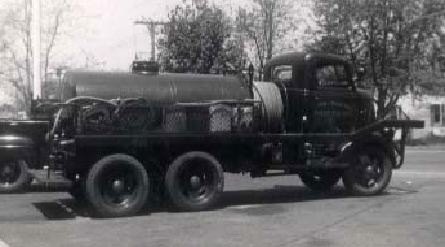
The Town of
Barnstable 1937 Ford Brush Breaker - Cape Cod's first.
The design using welded heavy steel bars and all wheel drive
permitted the apparatus to
physically drive off road and even through pine forests to access
and extinguish fires
in forested areas. Note large hose reel behind cab.
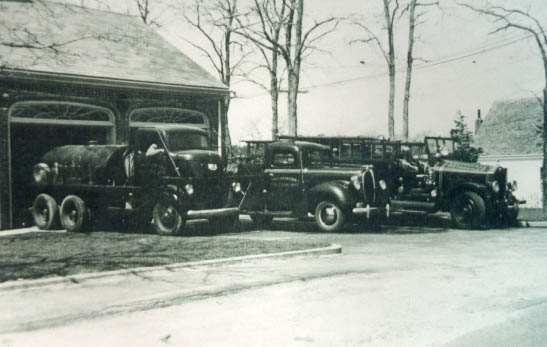
The Osterville
Fire Station in late 1930's.
C-O FD's 1926 Maxim 500 gpm pumper Engine 1 on right.
Town of Barnstable's 1938 Ford Fire Patrol Truck in middle.
The 1937 Brush Breaker is on the left.
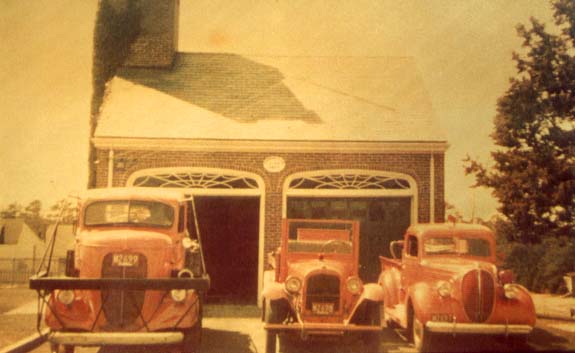
The Osterville
Fire Station served as the Town of Barnstable Forest Fire
Department's Headquarters.
This photo shows the 1937 Ford Brush Breaker, a 1922 Dodge fire
truck which served as the town's
first patrol truck, and the 1938 Ford Patrol Truck. Missing from
this photo is C-O FD's 1926 Maxim Pumper.

1937 Ford brush breaker in Osterville.
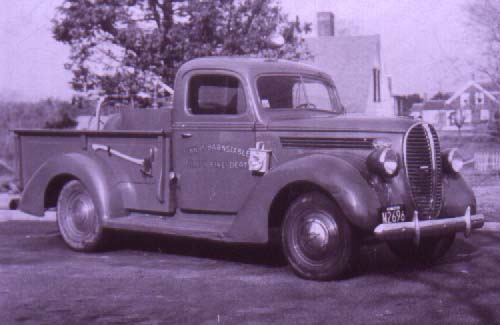
Town of
Barnstable 1938 Ford Fire Patrol Truck.
The patrol truck was usually first to respond to brush and grass
fires.
This had a 185 gallon water tank and 300' of 3/4" hose.
It is reported to have been one of the first apparatus with a two
way radio.
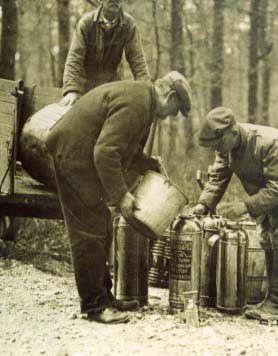
Prior to brush breakers it was all by hand and water extinguishers.

Fill them and load them in the wagon...
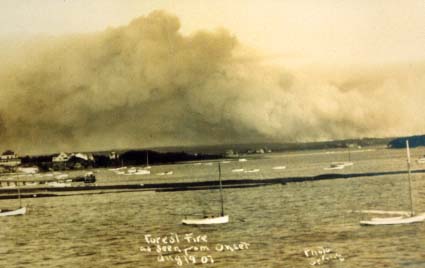
August 1907 photo from Onset bay of a Cape Cod forest fire.
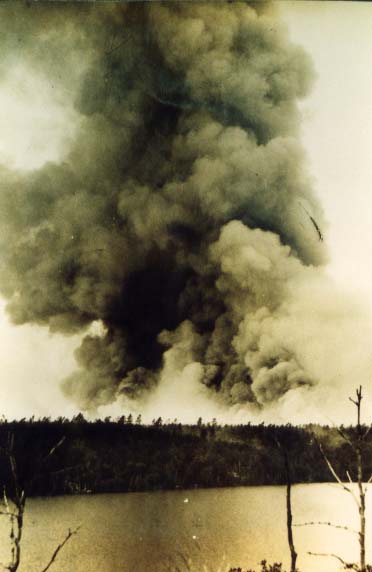
The brush and
forest fire problem on Cape Cod and in the southeastern part of
Massachusetts was severe, particularly in the spring. Thousands
of acres of forest
were burned yearly. The 1920's and 1930's saw many major fires
which led to the need for
a better way of fighting them. As trucks became available and
reliable, the
concept of the brush breaker was born.

The 1937 Ford
brush breaker was called to one of its first fires before it's
paint
had even dried. This fire in the Ridgewood Avenue area of Hyannis
on May 5, 1937 burned
over 2000 acres into the Cummaquid area of town. This newspaper
clipping
shows the raging fire as it destroyed the brand new brush
breaker.
The truck was rebuilt and served until 1952.
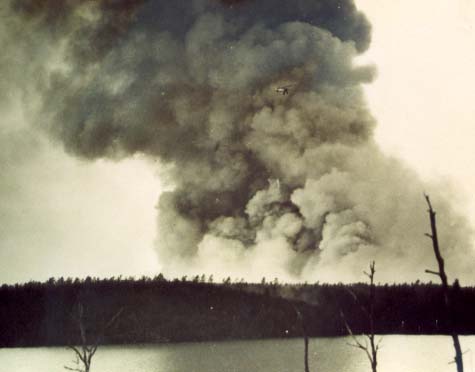
A bi-plane can
be seen against the plume of smoke at this Cape forest fire.
The plane may have been observing conditions from above.
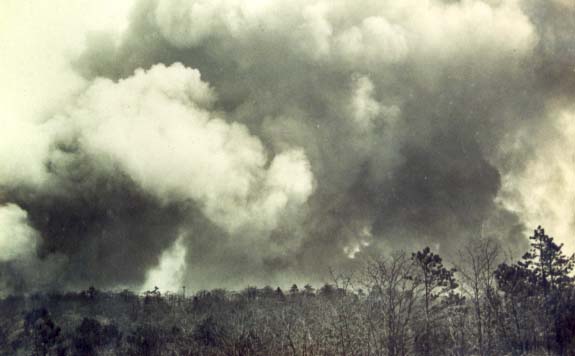
The 1920's
brought attention to the forest fire problem at the state level.
Research into ways to prevent and combat fires, included manned
fire patrol trucks,
fire roads, and fire prevention measures.
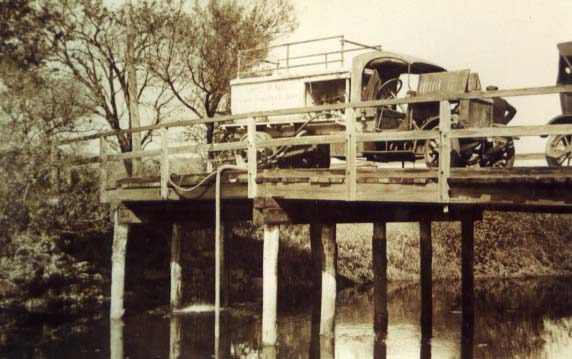
A 1920's State of Massachusetts forest fire truck drafts water from a bridge.
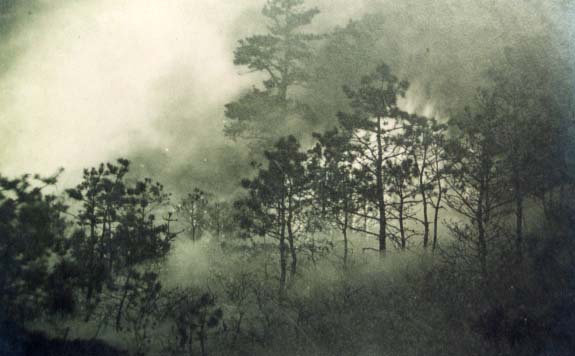
Pine forests in the spring are explosive fuel.
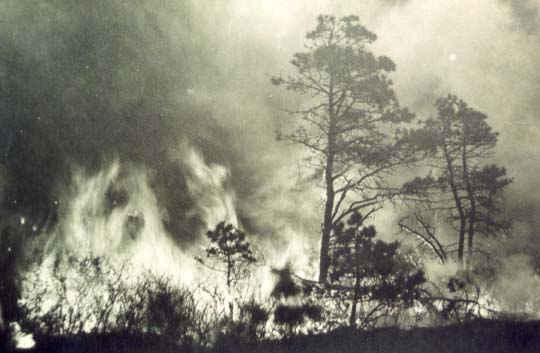
As fires
increase in size, the length of the side (flank) fire increases.
A sudden change in wind
speed or direction can turn low burning side fire into a
dangerous crowning headfire

Pine trees can explode as a headfire rages through the forest, up hills and across valleys.
One of the
Cape's worst fires ever occurred on April 27, 1938 in the Town of
Sandwich.
A fire which started in the national guard camp at what would
become Otis, burned into
the Shawme Crowell State Forest. The 12 mile long by 5 mile wide
fire trapped and burned
several firemen. Two men, Gordon King and Thomas Adams died from
burns.
Help came from several counties.

Without a way to
get to these fires while they are still small, fires would grow
to thousands of
acres in a short time. Fires of huge magnitude are not
extinguishable... the just run out of
fuel or go out as weather conditions determine.

Fires threaten power lines, homes, barns, and
local villages. It was not unusual for fires to burns for days,
from one side of the Cape to the other.

The invention of the brush breaker enabled men
to quickly reach fires, either by fire access roads, or by
driving
cross country through brush and forested land as necessary to
reach and attack fires with water carried on the
brush breaker. Teams of brush breakers working together could
quickly surround and extinguish many fires
before the grew large.
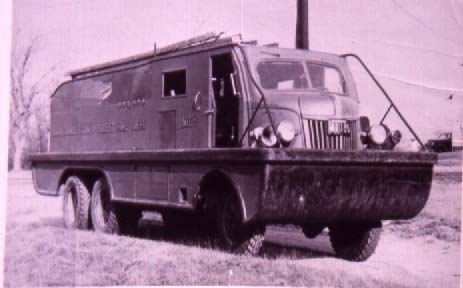
Soon after the
first brush breaker was built, Barnstable County Forest Fire
Department
had several brush breakers built. Carl Stark in Osterville also
built these on Ford chassis
with a different brush bar and body work. These County Breakers
were assigned
to local fire departments across the Cape who would staff them
and in return be able to
use them in their own communities.
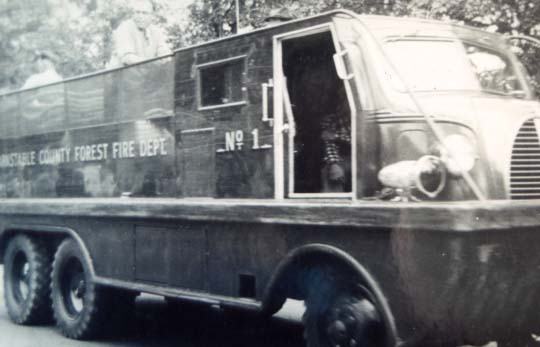
1939 Ford County No.1.
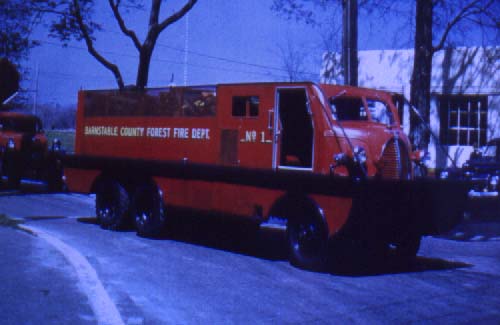
County No.1 was a 1939 Ford. It served in the North Falmouth Fire Station.
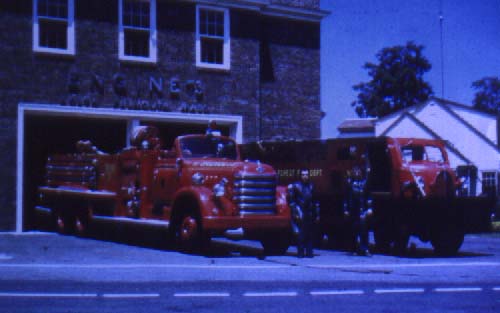
North Falmouth Fire Station No.3.
The 1939 Ford Brush Breaker is next to the Diamond T Engine 3.

When the County
replaced these first generation brush breakers,
local towns picked them up for use within the town.
Mashpee Fire Department puts No.3 to use.


Mashpee Forest Fire No.3 was nicknamed "Geranamo"
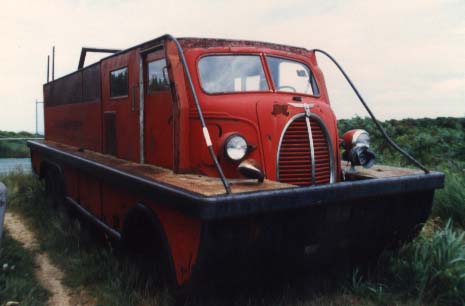
One of the 1939
Ford County Breakers finished out its life in the Martha's
Vineyard
community of Gay Head (now Aquinnah).
More Pages of Brush Breakers
1940's The Second Generation 1950's
1960's The Third Generation 1970's
1980's The Latest Generation 1990's
Related Links
Massachusetts DEM - Bureau of Forest Fire Control
NOTE
Photos in this series are from various sources
including fire department and personal collections.
